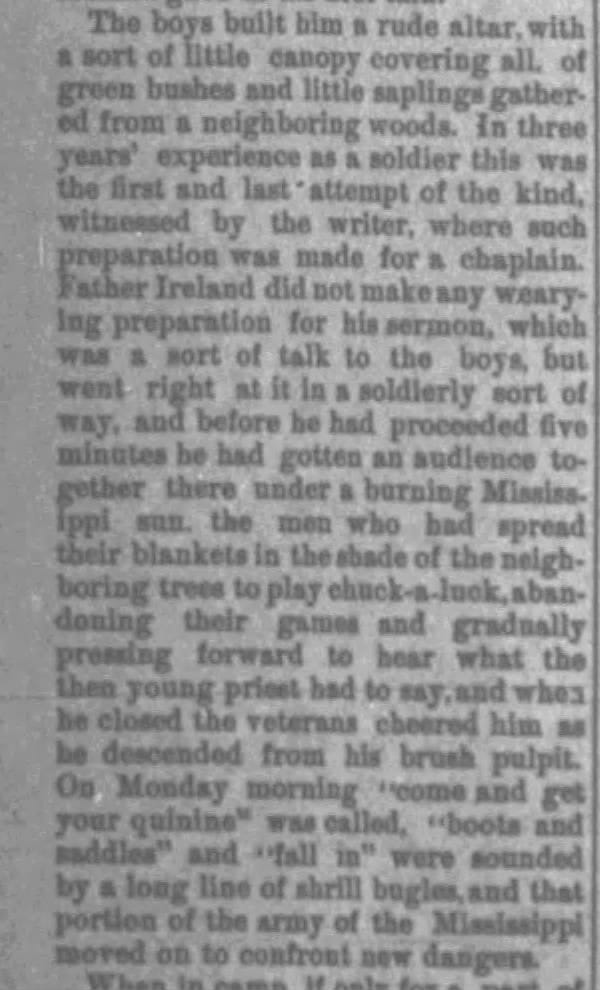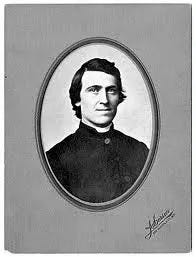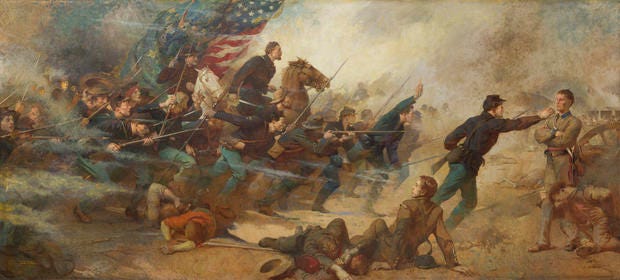John Ireland & The Civil War
John Ireland (1838-1918) and his family came to America (yes, from Ireland) in 1850, spending the first two years in Boston before moving to Minnesota, where in 1853, the fifteen-year-old began his studies for the priesthood.
Ireland was ordained in St. Paul, Minnesota on December 21, 1861 at a time when the country was in turmoil - eight months after the fall of Fort Sumter.
After ordination Father Ireland was assigned to the Cathedral of Saint Paul as an assistant; two months later President Lincoln called for another regiment, the fifth from Minnesota. Ireland volunteered to serve the spiritual needs of soldiers in battle and in March of 1862, three months after ordination, he was mustered into the last company of the fifth as chaplain.
His regiment was sent South to join with forces under the leadership of General William S. Rosecrans. In Mississippi, the Sunday before the second battle at Corinth, “the boys built him a rude altar ….”

In a letter to The Catholic Times in October 1893, Dr. J. C. Connell, author of The Irish in the Revolution and Civil War, wrote that Ireland was popular, always ready with a kind, encouraging word. He was, he said, of a cheerful, happy disposition.
Five days after his first Sabbath in Mississippi - when he was “cheered as he descended his brush pulpit” - the twenty-four-year-old chaplain found himself in the middle of the second battle at Corinth, October 3 and 4.
While he tended to the spiritual needs of those souls entrusted to him he is perhaps remembered best for his actions on October 4 as recounted in The Life of Archbishop John Ireland (James Moynihan, Harper & Bros., 1953):
The picture of the battle of Corinth in the Minnesota state capitol depicts the charge and deservedly gives Ireland a place of honor, for during the battle, when the cry was raised that the ammunition was failing, he was seen hurrying down the line, heedless of the bullets flying around him, carrying a supply of ammunition, and crying, “Here are your cartridges, boys, don’t spare them!” When the last shot had been fired, and the enemy had retreated, the soldiers looked for their chaplain, wondering what had happened to him. They found him at last – tending to the wounded and dying.
Many stories attesting to the respect and admiration for him were vouched for by those who took part in the engagement.
The Herald of Utica, New York quoted a veteran of the battle who had lain wounded, believing he was going to die, when a man came up to him, knelt beside him, made him drink from his flask, and dressed his wounds. He asked the name of his benefactor, which he said he would never forget for he had saved his life. It was John Ireland.
The following year Chaplain Ireland was mustered out and returned to his assistant pastorship in Minnesota, taking up the demands of pioneer parish life in the plains. In 1867 he was named pastor of the cathedral. He served as archbishop from 1888 until his death in 1918.





